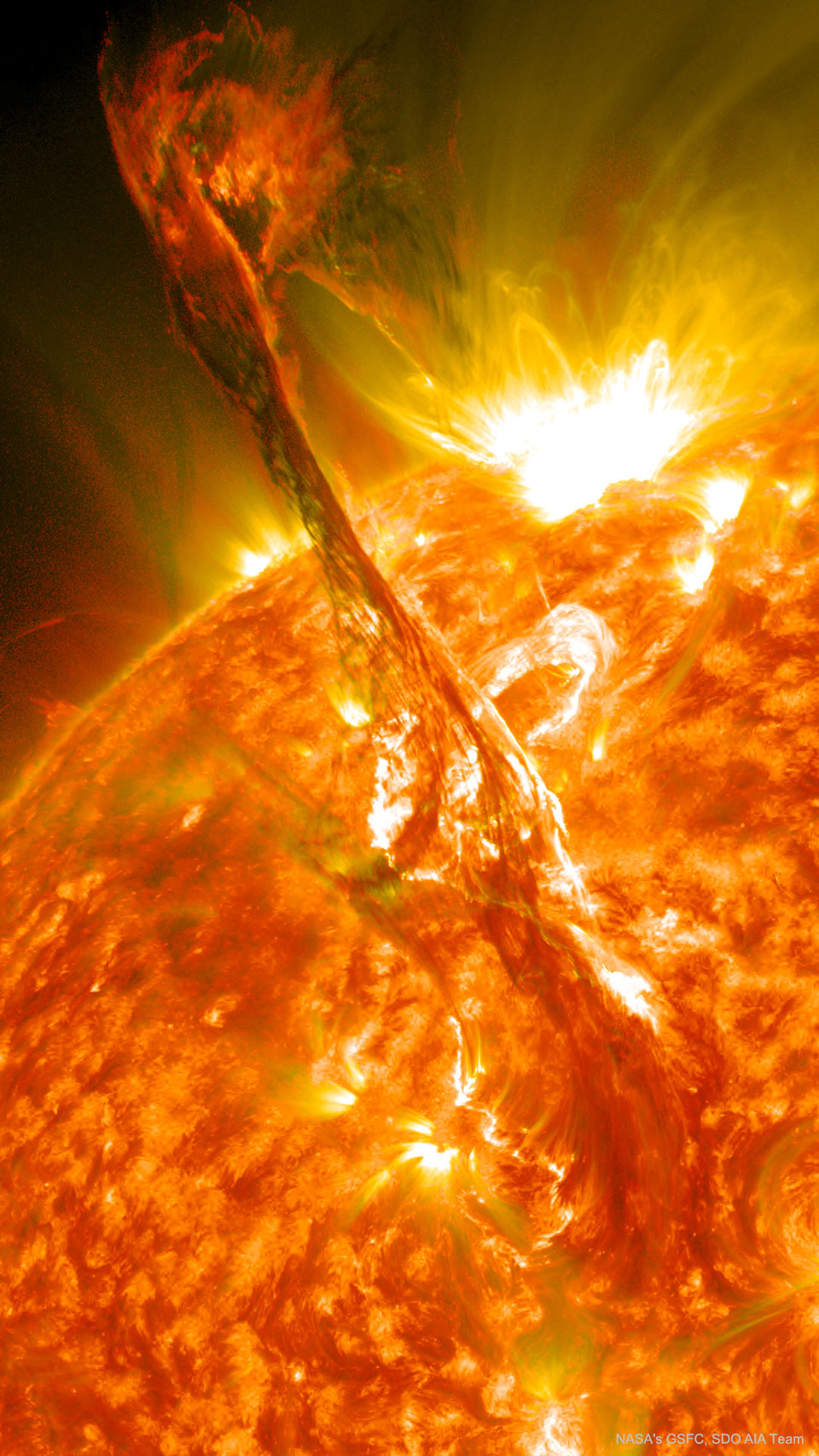太陽燈絲噴發
A Solar Filament Erupts

發表日期:2024-05-26
我們的太陽怎麼了? 沒什麼特別的--它只是丟擲了一條太陽絲。 2012 年年中,一條長期存在的太陽燈絲突然向太空噴發,產生了高能日冕物質拋射(CME)。 由於太陽磁場不斷變化,日冕物質拋射已經持續了好幾天,爆發的時間也出乎意料。在太陽軌道上的太陽動力學天文臺的密切監視下,由此產生的爆炸將電子和離子射入太陽系,其中一些在三天後到達地球並撞擊地球的磁層,引起可見的極光。在特寫的紫外線影像中,可以看到在爆發的燈絲上方,等離子體環繞著活躍區域。太陽正接近其 11 年週期中最活躍的時期,產生了許多日冕洞,使帶電粒子噴射到太空中。和以前一樣,這些帶電粒子會產生極光。 您的天空驚喜你的生日是哪一天?
原文:What's happened to our Sun? Nothing very unusual -- it just threw a filament. Toward the middle of 2012, a long standing solar filament suddenly erupted into space, producing an energetic coronal mass ejection (CME). The filament had been held up for days by the Sun's ever changing magnetic field and the timing of the eruption was unexpected. Watched closely by the Sun-orbiting Solar Dynamics Observatory, the resulting explosion shot electrons and ions into the Solar System, some of which arrived at Earth three days later and impacted Earth's magnetosphere, causing visible auroras. Loops of plasma surrounding the active region can be seen above the erupting filament in the featured ultraviolet image. Our Sun is nearing the most active time in its 11-year cycle, creating many coronal holes that allow for the ejection of charged particles into space. As before, these charged particles can create auroras. Your Sky Surprise: What picture did APOD feature on your birthday? (post 1995)
※ 本文由萌芽機器人自動轉貼自每日一天文圖(Astronomy Picture of the Day,APOD),原文為英文,正體中文是透過 DeepL 翻譯及 OpenCC 進行自動處理,內容僅供參考,若有任何錯誤之處還請見諒!
關於每日一天文圖:每日一天文圖網站是美國國家航空暨太空總署與密西根理工大學提供的服務,網站每天提供一張影像或圖片,並由天文學家撰寫扼要說明其特別之處。